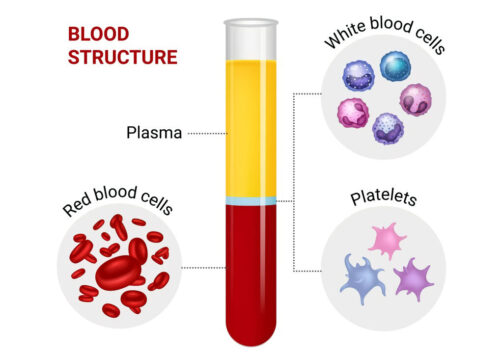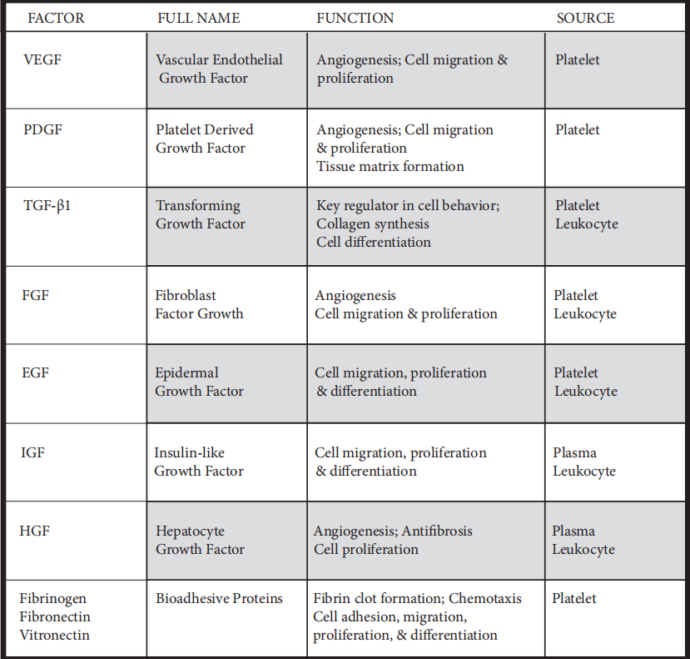How PRP KIT Works
High concentration of Autologous Platelet-rich-plasma (PRP)
Concentration of growth factors in platelet-rich plasma may stimulate or speed up the healing process, shortening healing time for injuries, knee injection ,decreasing pain and even encouraging hair growth,skin face ,acne scar.

How PRP Work?
If we compare our skin to a “wall”, then collagen is the “bricks” that make up the wall and fibrin is the “steel skeleton” of the wall; skin aging and aging is the loss of epidermal cells rich in collagen and the loss of fibrin support, causing the skin to collapse and pull across; PRP is there to activate the regeneration of new cells. Platelets release growth factors, especially EGF (Epidermal Growth Factor) and VEGF (Vascular Growth Factor), which induce the regeneration of surrounding blood vessels, enrich the surrounding blood microcirculation, enrich stem cells and nutrients, regenerate epidermal cells, and these regenerated epidermal cells grow along the fibrin to form new tissues, with the participation of so many “new bricks”, the “wall” will be strong again, and the skin will be healthy and full again. With the participation of so many new “bricks”, the “wall” will be firm again and the skin will regain its health and fullness.
In the field of aesthetics, the less red blood cells in PRP the better, as the haemoglobin in red blood cells is rich in iron and this enrichment can lead to pigmentation and depending on each individual’s system, there is a high chance of pigmentation building up which can lead to dullness or more serious discolouration. Leukocytes and granulocytes are inflammatory cells and their presence acts as a protective net for the surrounding tissues, with the disadvantage that they are more likely to cause inflammatory reactions such as redness and pain, but these reactions disappear quickly. The role of neutrophils in the field of cosmetology has not been studied for the time being.
What Role do Red Blood Cells Play?
Hemoglobin is the protein inside Red Blood Cells (erythrocytes) that carries oxygen throughout the body. RBC are also responsible for removing Carbon Dioxide from your body by transporting it to the lungs to be exhaled.
.
RBC have almost no involvement in the regenerative process other than to oxygenate the surrounding tissue with intact vasculature. Concentrating RBC to be applied to a specific site does not enhance the process so our goal is to remove these cells.
What Role Do White Blood Cells Play?
White Blood Cells (leukocytes)
can be separated into two categories Monocytes Non-inflammatory and helpful to regenerative process.
Our goal is to spare as many of these cells as possible.
Granulocytes Inflammatory cells whose goal is to fight infection/trauma by releasing toxins that kill bacteria, recruit immune cell but also cause tissue damage Our goal is to remove these cells from our PRP
What Role Do Platelets Play?
What Role Do Platelets Play?
Platelets (thrombocytes) lack a nucleus and act like a pod containing alpha granules and proteins, including growth factors that are responsible for initiating the tissue regeneration or wound healing process.
Platelets have two main functions. Clotting (hemostasis) and releasing growth factors that signal to the body to repair itself.
Activated platelets secrete more than 300 active substances involved in coagulation, immune cell recruitment and inflammation, wound healing angiogenesis and tissue repair and remodeling
In short, we want the platelets because of their contents.
Platelet Function #1: Hemostasis When the lining of a blood vessel is broken, plateletsare attracted forming a platelet plug. These platelets have thrombin receptors on their surfaces that bind serum thrombin moleculesl1lwhich in turn convert soluble fibrinogen in the serum into fibrin at the wound site.
Fibrin Monomers bond to create a polymeric mesh which forms a clot and the scaffold on which new tissue gets built.
Platelet Function #2: Growth Factor Release
What are Growth Factors?
Growth factors contained in platelets are signaling proteins capable of stimulating cellular growth, proliferation, healing, and cellular differentiation. Example: Cytokines bind to specific receptors on the surface of their target cells with specific instructions for that cell.
They often promote cell differentiation and maturation, which varies between growth factors. For example, epidermal growth factor (EGF) enhances osteogenic differentiation, [1] while fibroblast growth factors and vascular endothelial
Key Growth Factors
EGF
(Epidermal Growth Factor)
Promotion of epithelial cell growth, angioegenesis, promotion of wound healing
FGF
(Fibroblast Growth Factor)
(Fibroblast Growth Factor)
Tissue repair, cell growth, collagen production
PDGF
(Platelet Derived Growth Factor)
(Platelet Derived Growth Factor)
Cell growth, new generation and repair of blood vessels, collagen production
VEGF
(Vascular Endothelial Growth Factor)
(Vascular Endothelial Growth Factor)
Growth and new generation of vascular endothelial cells TGF
IGF
(Insulin-like Growth Factor)
Protective for cartilage cells and activates osteocytes
TGF-β1
(Transforming Growth Factor)
Induces cell apoptosis

Being KEALOR PRP KIT/PRP Tube Distributor
• Higher PLT concentration with little amount of blood.
• Clear distinction between PRP and PPP.
• Simpler process.
• Suitable for all kinds of centrifuges.
• Easier and more accurate PRP extraction.
• Easier RBC Isolation.
PRP & Needle specialists
Fast Links
Kealor is a professional supplier for medical consumables, medical devices, aesthetic product.
We always endeavors to popularize PRP therapy in various fields such as Dermatology, Plastic surgery, Orthopedics, Neurosurgery, and so on.




